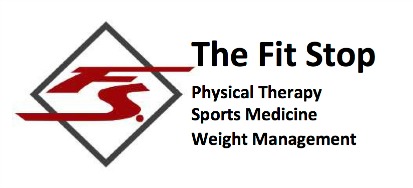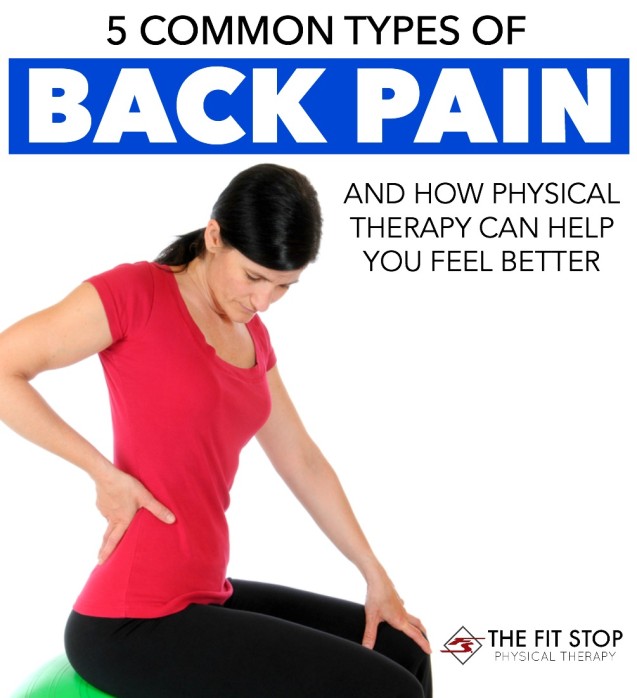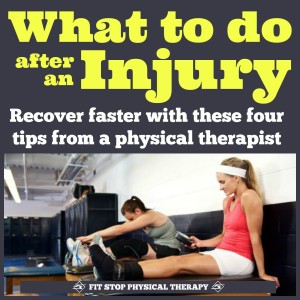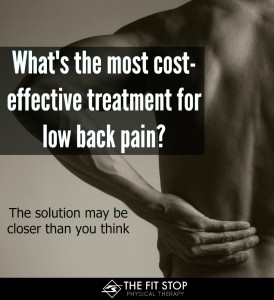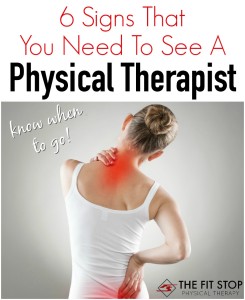5 Types Of Low Back Pain And How Physical Therapy Can Help
We’ve all been there before – maybe it was after a long weekend of lots of yard work. Maybe it was after sitting for a long time on a car ride or a long day at the office. Perhaps you even experienced it bending over to pick up the toothbrush that you dropped (I kid you not – I’ve seen it before!). Back pain can hit us anytime and anywhere. It can range from “I’ll take a couple of Ibuprofen pills” and be fine to “not getting out of bed for three days” and hobbling your way into the doctor’s office or emergency room. Not all back pain is created equally. Determining the exact cause of your back pain is crucial to receiving the best care and promoting the quickest recovery. Today one of our doctors of physical therapy, Cameron Garber, is discussing 5 of the most common types of low back pain and sharing some advice that can potentially help you to feel better.
1. Muscle strain or sprain
Pain caused by a muscle strain in the low back is one of the most common forms of low back pain. It is the kind of pain that you feel the day after lifting something heavy or doing something active you haven’t done in a while. Who hasn’t done that right? It is 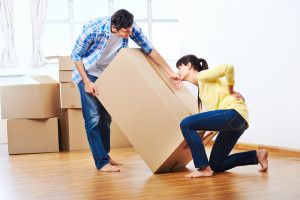 usually a ‘my muscles are stiff, it aches and it hurts to move or stretch’ kind of pain.
usually a ‘my muscles are stiff, it aches and it hurts to move or stretch’ kind of pain.
Luckily, this type of pain usually resolved quickly with little to no treatment depending on the severity of the strain. Most muscle strains resolve within 72 hours with ice, ibuprofen and rest. Light stretching and massage are also very helpful. If the pain continues past 72 hours it may be more of a severe strain and may be helped by treatment from a physical therapist.
If you’re wondering if a physical therapist can help you please give us a call at Fit Stop and we can help you determine how best to seek care for your pain. If you’re not sure how physical therapy can help you check out this post about how physical therapy can help you feel better.
2. Disc bulge or rupture
Another very common form of low back pain is caused by disc bulges. This is the sharp stabbing or pinching pain which can take your breath away at times. It often will cause pain which is described as shocks of pain which travel across the back or down the legs. If left alone it can cause numbness and weakness. If treated early it can resolve within a few days to a week. The pain or threat of pain and some stiffness might linger for 6 to 8 weeks. This type of injury is also very easy to re-injure. Here’s why:
Between the bones of your back you have something called a disc. This disc is formed kind of like a jelly donut. Just like a donut the 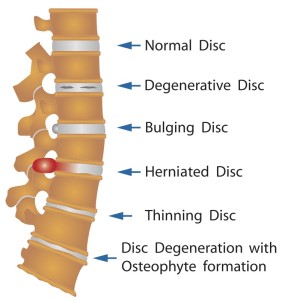 disc has a tougher outer layer (annulus fibrosus) and then a thin inner gel (nucleus pulposis). Imagine what would happen if you squished the jelly donut between to objects, but only on one side, the jelly would squish out the other side.
disc has a tougher outer layer (annulus fibrosus) and then a thin inner gel (nucleus pulposis). Imagine what would happen if you squished the jelly donut between to objects, but only on one side, the jelly would squish out the other side.
When talking about a disc bulge, the jelly donut phenomenon is essentially what happens. Flexing and bending forward, especially for prolonged periods of time (like sitting at a desk or driving) or lifting something heavy, can cause the jelly to bulge past the tough outer layer and pinch the nerves in the spine. The nerve getting pushed on or pinched by the bulging disc material is what causes the sharp pain which travels down the back and legs and causes numbness.
Early physical therapy for a disc bulge is very important. It is critical that you go directly to a physical therapist for treatment as early as you can. The more quickly you can get help the sooner you can get your symptoms relieved and the more complete the recovery. It is also important in preventing further damage to the disc nerve structures. Occasionally a disc bulge is so severe that surgery is an only option for relief. If this is the case your physical therapist should be able to refer you to a surgeon who can help you receive top notch care.
Curious about what the physical therapists at Fit Stop Physical Therapy would do to help you with your back pain symptoms? Click here for a list of specialized treatments we provide to help you feel better.
3. Degenerative Disc Disease
Refer back to the jelly donut example talked about with disc bulges. Age, time and increased body weight can cause these discs to simply get smashed flat. Over time they break down and lose their height. They struggle to get as much nourishment and hydration due to continual compression. The compression is commonly from poor posture while sitting or performing repetitive bending and lifting and is augmented by being overweight. This degenerative disc condition typically hits us later in life (50’s, 60,’s and 70’s) or if there is a history of back injury/trauma.
Similar to increasing age and mileage-related causes of low back pain, degenerative disc disease isn’t reversible. It is a result of the lack of space in between the vertebrae. These back pain symptoms are usually brought on over time and get progressively worse. Pain causes decreasing ability to move and decreased room for the nerves to exit the spine. This causes pinching of nerves and subsequent pain and possible changes like numbness, tingling and weakness.
By strengthening key muscles and educating you regarding proper postures and positions, physical therapy can help decrease many of the symptoms related to degenerative disc disease. Physical therapy can even help to slow the progression of the condition. Therapists can help you to restore your motion and increase strength to better stabilize your spine.
4. Arthritic changes
Age can take its toll on us in a big way. Over time the years and the mileage of life can add up in our joints. Along the length of our 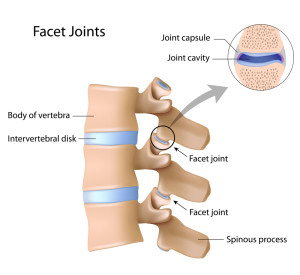 spine we have a whole lot of joints. Each spinal level has joints which match up with the bones above and below it and on both the right and left sides. All of these little joints mean a lot of moving parts which can wear out.
spine we have a whole lot of joints. Each spinal level has joints which match up with the bones above and below it and on both the right and left sides. All of these little joints mean a lot of moving parts which can wear out.
Over time the rubbing of bones on one another begins to form changes of the bones simply wearing away or in response to the rubbing they can sometimes form bony spurs. This causes stiffness in the back, loss of full movement and pain with bending backward or standing up straight. People with arthritis often find prolonged standing and activity very painful.
Physical therapy can be very helpful for those who have arthritic back pain. Although nothing can change the arthritis completely, there are exercises and stretches which help to improve mobility and decrease pain. If you’d like to see how physical therapy can help this type of back pain you call us here at Fit Stop. We are happy to share with you some exercises that will help your back to feel better.
5. Spinal Stenosis
As we age there are more changes that can occur in our spine, not just arthritis. One of the things which commonly happens is that the wear and tear of life can cause bony changes in the spine which decrease the space available for the nerves of the spine to come out of the spinal column. This narrowing of the available space for your spinal cord and nerves is referred to as “stenosis”.
Low back pain because of stenosis is usually associated with slowly decreasing range of motion and sensation changes. This pain and altered sensation usually develops gradually over time. Symptoms are usually less immediately painful and are sometimes harder to detect. They often involve deep aching pain in the back, buttocks or legs. Also common is a gradual numbness which appears in the legs or feet. The pain can become intense at times but is usually less of a sharp pain.
Due to the overall degenerative state of this problem, stenosis isn’t curable with therapy alone. However the effects can be minimized or diminished to within manageable levels. Physical therapy can be an important component in the pain management strategy. Our physical therapists at Fit Stop are specially trained in helping you to get back to functioning at the highest possible level even with back pain.
Chances are that if you haven’t already experienced some degree of back pain in your life that you will one day. Fortunately there’s a lot that physical therapy can do to help you to eliminate this pain and restore maximal function. If you’re interested in learning more about these spine conditions or would like to set up an appointment with one of our specialists we would love to help you out! CLICK HERE to be taken to our contact page where you can find the Fit Stop clinic closest to you.
Interested in learning more? Check out some of our other popular blog posts to learn more about back pain and physical therapy (click on the picture to be taken to the post)
Cameron Garber, PT, DPT
Fit Stop Physical Therapy – Farmington
(801) 558-8612
